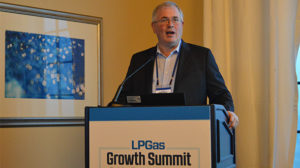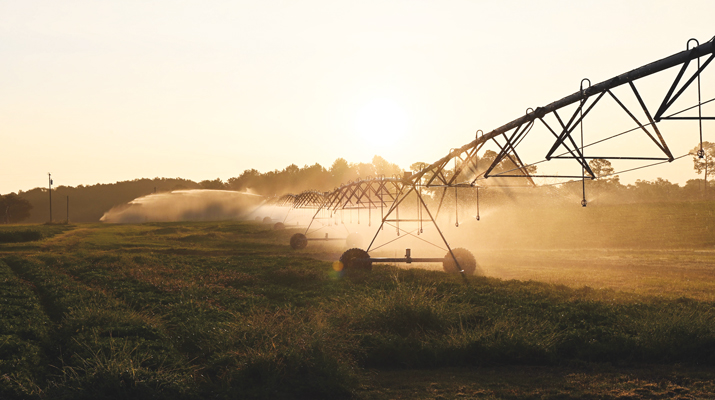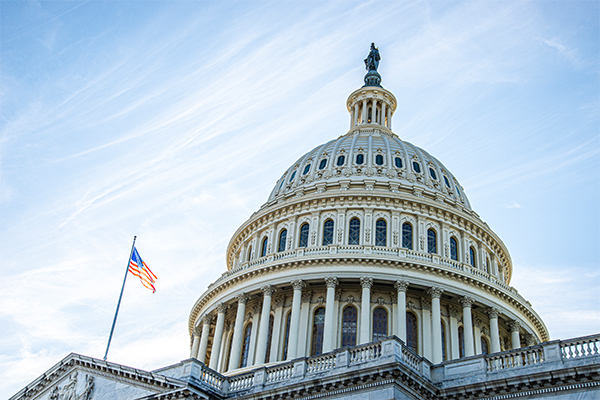ICF analyst urges aggressive action to grow retail gallons
Mike Sloan, the managing director for ICF’s Natural Gas and Liquids Advisory Services Group, conveyed a critical message to attendees of the 2019 LP Gas Growth Summit: LPG market conditions are in flux – propane retailers must adapt, or get left behind.

Mike Sloan, a managing director at ICF, addresses attendees of the LP Gas Growth Summit. Photo by LP Gas staff
The propane industry has faced many obstacles that have led to declining sales in the U.S. retail market during the past 15 years. Changes in a range of areas – from supply to energy policy – also present opportunities, he emphasized.
Supply revolution
Major increases in supply availability haven’t benefited retailers substantially, or in ways they might expect, argued Sloan.
“The propane supply revolution is over,” he claimed. “Supply won.”
For one, domestic demand can’t keep up with production. While abundant supply lowers prices and theoretically gives propane an edge against its competitors, it’s too early to call whether low prices will alter market fundamentals in the long term.
Sloan asked for feedback from his audience about the extent to which lower prices are contributing to an uptick in retail sales over the past two years: Will gains continue as long as supply remains high and prices remain low?
Jim Davis of ThompsonGas said he attributes propane sales growth to a stronger economy and concomitant increases in building construction and home renovations. Retailer attendees were silent on whether price advantages have led to increased sales.
If retailers expect high propane production to ease supply shortages during periods of high demand, Sloan warns that logistical hurdles remain as problematic as ever.
“Just because there’s infinite supply doesn’t mean it’ll be where you want it when you need it,” said Sloan.
Part of the reason is that large producers, processors and shippers have shifted their focus from the U.S. retail market to large, easy-to-serve export markets.
Large, geographically integrated retailers stand to benefit most from increased production as they can take advantage of a more diverse range of supply sources than smaller companies, Sloan noted. Increased margins for larger companies will lead to additional industry consolidation.
Risks and opportunities
As long as current market trends move forward, Sloan explained, losses in the retail market will continue.
Increased energy efficiency, competition with electricity and the expansion of natural gas lines are among the most notable challenges contributing to gallon losses, according to ICF research. “Decarbonization through electrification” policies pose the most significant threat over the next 10 years, said Sloan.
But he also pointed out that aggressive market development could reverse that trajectory.
“I can envision a growth path that adds a billion or 2 billion gallons of propane to the market over the next 10 years or so,” said Sloan.
Even decarbonization policies open opportunities for growth. Propane has a role in a lower carbon economy as an auto fuel. ICF projects propane used in internal combustion engines will grow at a healthy 5.6 percent rate from 2020-30, although growth in autogas has not been as strong as the firm initially expected, explained Sloan.
Other growth opportunities include fuel oil conversions in the Northeast, agricultural heating and new burner tips for existing customers, according to ICF research.
While engine fuel and agricultural markets are lower margin, nimble small- and mid-sized companies can still achieve significant growth, said Sloan.
















